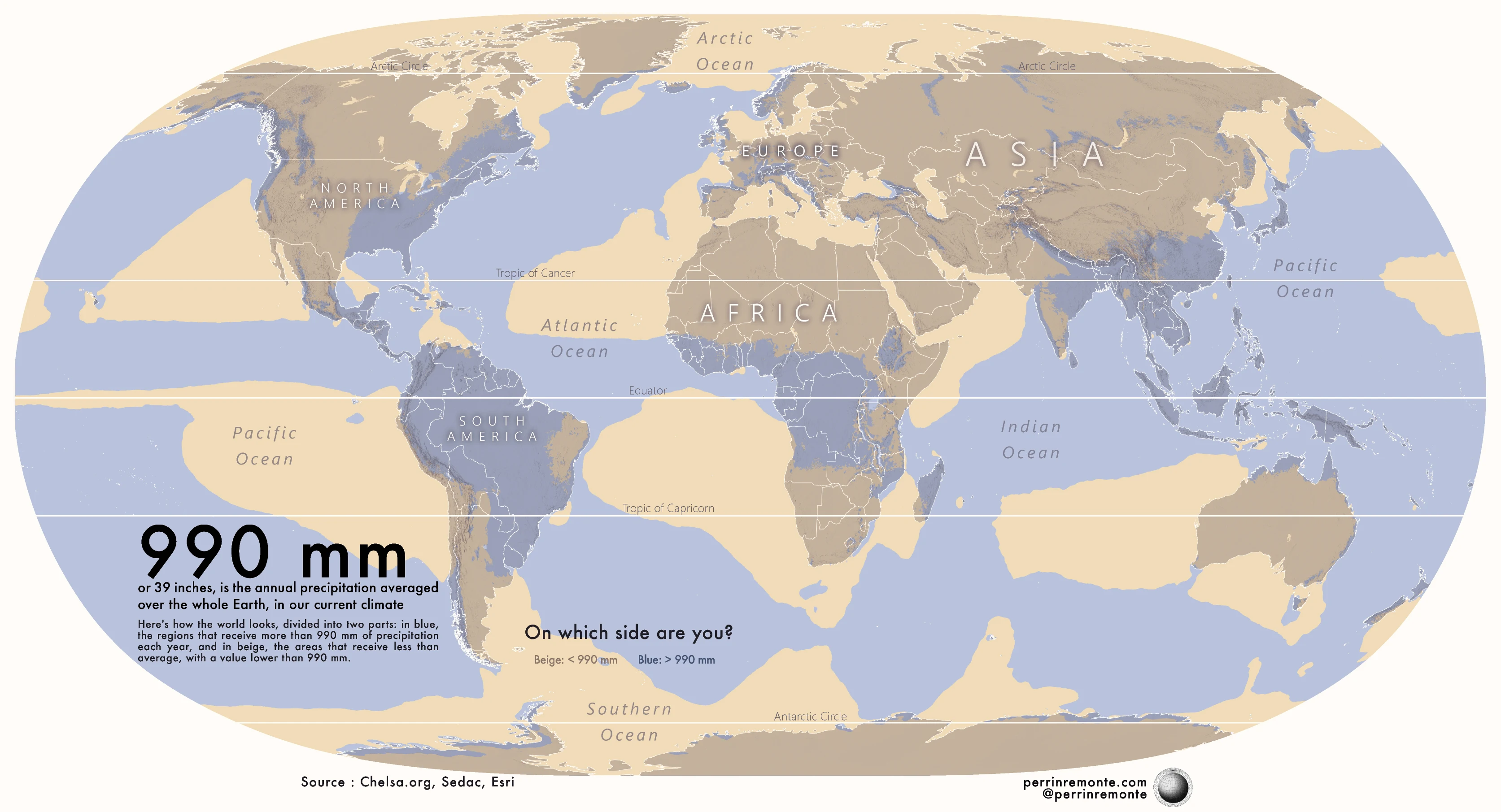Typically, the Earth experiences an annual precipitation of approximately one meter (39 inches) in the form of rain or snow. Nevertheless, variations in factors such as latitude, wind patterns, alterations in the Earth's surface, and the planet's axial tilt result in an uneven distribution of global precipitation.Typically, the Earth experiences an annual precipitation of approximately one meter (39 inches) in the form of rain or snow. Nevertheless, variations in factors such as latitude, wind patterns, alterations in the Earth's surface, and the planet's axial tilt result in an uneven distribution of global precipitation.
To illustrate this phenomenon, cartographer Perrin Remonté utilizes information from Chelsea Climate. The world is divided into two sections for visualization purposes. The first half, depicted in blue, receives an annual precipitation of more than one meter (rain or snow), while the second half receives less.
Derived from the water cycle, precipitation initiates with evaporation. However, for moist air to transform into rain (or snow), it must first cool and condense. Here are some key factors that significantly influence precipitation:
- Lower Latitudes: Regions situated at or near the equator experience higher temperatures, leading to increased evaporation from nearby water bodies.
- Topography: Mountain ranges, particularly those along coastlines, compel warm air to ascend and cool, resulting in precipitation like rain or snow on the windward side and arid rain shadows on the leeward side.
- Trade Winds: Steady easterly surface winds, originating from subtropical high-pressure zones and blowing towards the equator, transport moist air from the ocean to the land.
Top 10 countries with the highest average precipitation, mm
- Colombia: 3,240
- Sao Tome & Principe: 3,200
- Papua New Guinea: 3,142
- Solomon Islands: 3,028
- Panama: 2,928
- Costa Rica: 2,926
- Samoa: 2,880
- Malaysi:a 2,875
- Brunei Darussalam: 2,722
- Indonesia: 2,702
Top 10 countries with the lowest average precipitation, mm
- Egypt: 18
- Libya: 56
- Saudi Arabia: 59
- Qatar: 74
- UAE: 78
- Bahrain: 83
- Algeria: 89
- Mauritania: 92
- Jordan: 111
- Kuwait: 121

This post may contain affiliate links. As an Amazon Associate, I earn from qualifying purchases.
Comments
Post a Comment